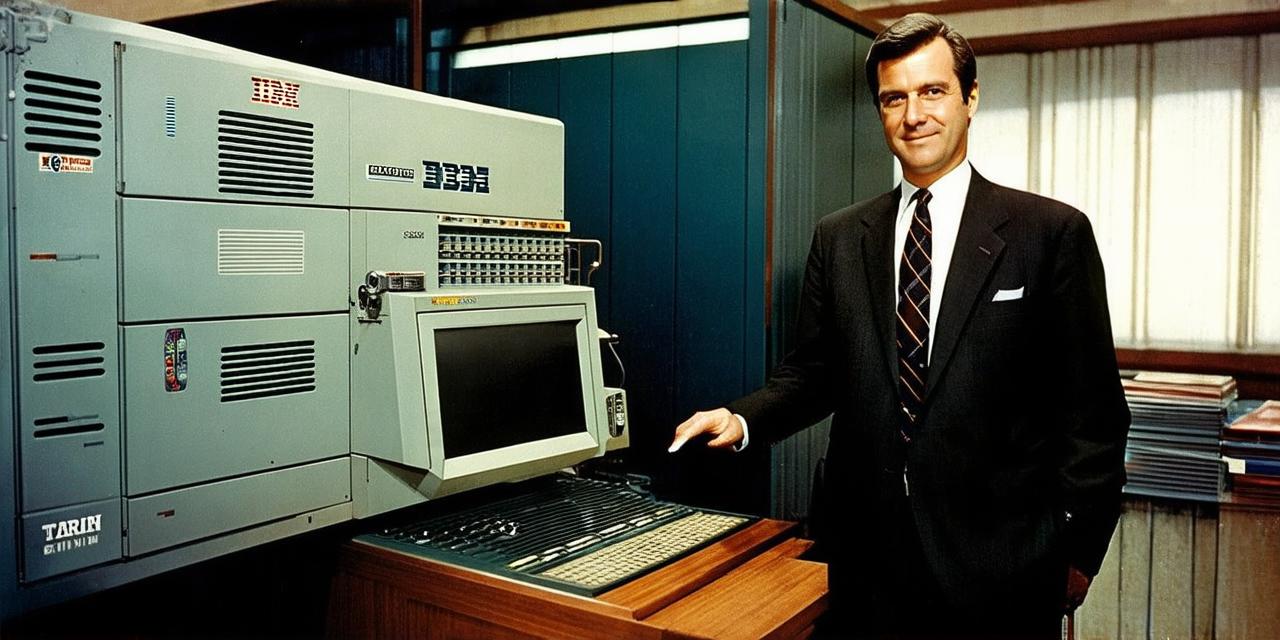What companies did outsourcing first
Introduction:
Outsourcing has been a popular business strategy for decades. It involves outsourcing tasks or processes to third-party service providers, allowing companies to focus on their core competencies and save costs.
1. IBM: The Early Pioneers of Outsourcing
IBM was one of the first companies to adopt an outsourcing strategy. In the 1960s, IBM launched its “Flexible Plan,” which allowed customers to purchase software and hardware separately rather than as a bundled package. This approach led to the creation of a new business model known as “computer time sharing.”
Computer time sharing involved renting computer resources from IBM to customers on an hourly basis, allowing them to use the computers without having to purchase expensive hardware. This model was a success and paved the way for other outsourcing strategies.
2. General Electric: The Birth of Offshore Outsourcing

In the 1980s, General Electric (GE) became one of the first companies to outsource manufacturing jobs overseas. GE opened a plant in Bangalore, India, and began producing high-speed turbines for its customers. This move allowed GE to take advantage of lower labor costs in India and improve its productivity.
GE’s success with offshore outsourcing inspired other companies to follow suit. Today, many companies outsource manufacturing jobs, software development, and other tasks to countries where labor costs are lower.
3. AT&T: The Rise of Telecommunications Outsourcing
AT&T was one of the first telecommunications companies to outsource its operations. In the 1980s, AT&T began outsourcing its maintenance and repair services to third-party providers. This move allowed AT&T to reduce costs and improve customer service by providing faster response times.
AT&T’s success with telecommunications outsourcing paved the way for other telecommunications companies to follow suit. Today, many telecommunications companies outsource their operations to third-party providers to save costs and improve efficiency.
4. Ford: The Future of Manufacturing Outsourcing
Ford was one of the first automotive companies to adopt an outsourcing strategy. In the 1980s, Ford began outsourcing manufacturing jobs overseas to countries where labor costs were lower. This move allowed Ford to take advantage of lower labor costs and improve its productivity.
However, Ford’s outsourcing strategy was not without controversy. Critics argue that outsourcing manufacturing jobs overseas has led to a decline in the quality of products produced by Ford and other automotive companies. In response, some automotive companies have started bringing manufacturing back to the United States.
Summary:
The companies that pioneered outsourcing have made significant contributions to the industry. IBM’s “Flexible Plan” led to the creation of a new business model known as computer time sharing, which paved the way for other outsourcing strategies. General Electric’s offshore outsourcing initiative inspired other companies to outsource manufacturing jobs overseas, and AT&T’s telecommunications outsourcing strategy improved customer service by providing faster response times.
While outsourcing has been a popular business strategy for decades, it is not without controversy. Companies must carefully consider the benefits and drawbacks of outsourcing before making a decision. By learning from the companies that pioneered outsourcing, businesses can make informed decisions about their own outsourcing strategies.
FAQs:
Q: What is the definition of outsourcing?
A: Outsourcing is the practice of hiring third-party service providers to perform tasks or processes that are typically done in-house by a company.
Q: What are the benefits of outsourcing?
A: The benefits of outsourcing include cost savings, improved efficiency, and access to specialized expertise.
Q: What are the drawbacks of outsourcing?
A: The drawbacks of outsourcing include loss of control over certain aspects of operations, cultural differences, and language barriers.
